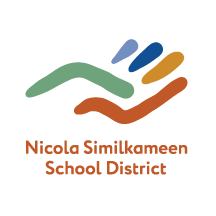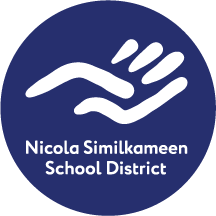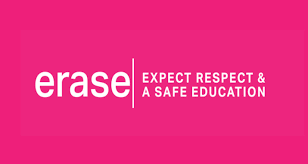Career and Life Connections 12/Capstone
Why Career Education?
- In Grades 10 to 12, students explore and research a multitude of educational, work-related, and life opportunities to develop the knowledge and the personal and social competencies to manage the next steps in their career-life journeys.
- In junction with the School District 58 and NVIT Transitions support team, we want you to leave with a plan for your next steps after graduation along with the skills to change and adapt your plan as needed.
Career and Life Connections 12 is offered outside the timetable and is comprised of 3 interconnected facets that need to be completed for graduation in BC.
- CLC12 Coursework
- Career Exploration
- Capstone
Course Work (20% of total mark)- Due January 20th, 2022
Students are asked to complete a series of activities through the myBlueprint Career Education software (www.myblueprint.ca/sd58). This learning is documented using an online student-built portfolio through the myBlueprint site which students create before leaving for the summer. Students use the same log in credentials as other district software to access their myBlueprint account.
Username: school email address (example-dandersen678@sd58.bc.ca)
Password: “sd” followed by student number (example-sd12345678)
Career Exploration (30% of total mark)- Due March 18th, 2022
Students are expected to complete 30 hours of Career Exploration. This work will also be documented in the student’s myBlueprint digital portfolio. Career Exploration is individual to each student and their post-secondary pathway of choice. Consultation with the CLC 12 teacher is integral to developing a plan that best fits each student. There will be many Career Exploration opportunities provided throughout the school year, but students can develop their own independent plan as long as it has purpose and connects to their career goals.
CAPSTONE (50% of total mark)- Presentations Due by May 27th
The purpose of the capstone is to let students demonstrate the knowledge, competencies, and passion(s) that they can offer the world. Students create a capstone project through reflection of their learning journey and core competency growth, designing and assembling a representation of that learning, and showcasing their capstone to an appropriate audience. Capstone projects are individual to student strengths and interests and can take many forms but are ultimately a culminating project that should demonstrate significant time and effort on the part of the student. More information on the Capstone Project will be distributed to students over the course of the 2021/2022 school year as they develop their project. But for those that wish to start early, please contact Mr. Andersen for details.
Capstone
What is a Capstone?
The capstone is a rigorous learning opportunity for students to reflect and share in personally meaningful ways, and is a requirement for Career-Life Connections 12 and for graduation. The purpose of the capstone is for students to demonstrate the knowledge, competencies, and passion(s) that they can offer the world, as they integrate personal interests and strengths with preferred future possibilities.
Rationale
A capstone project is a celebration of learning and experience. It is designed to encourage students to think critically, solve challenging problems and develop skills. It is their venue to connect with the world outside of school and to demonstrate that they have the knowledge and ability to go on to further their education, enter the workforce, and/or operate their own business.
The Capstone Promises to:
- Help students make connections between what they are learning and what they hope to see in their future.
- Provide students with focused, structured, authentic, and experimental learning; responsibility for meeting timelines, making decisions, conducting research, preparing and making presentations – all transferable skills needed for success in the workplace.
- Have a meaningful piece of learning in the form of a product/experience to showcase in competitive interviews or otherwise advance career aspirations.
- Ensure students meet BC Ministry core competencies (Communication and Collaboration, Creative and Critical and Reflective Thinking, Personal and Cultural Identity, Personal Awareness and Social Responsibility) through the development of the following skills:
- Communication (oral and written)
- Public Speaking
- Research Skills
- Media Literacy
- Teamwork
- Planning and Organization
- Self Sufficiency
- Goal Setting
- Time Management
Capstone Stages and Components
The purpose of the capstone is to let students demonstrate the knowledge, competencies, and passion(s) that they can offer the world. Students
Stage 1 – The Preparation Process
Proposal/Mentor – The student will select a project idea and develop a Capstone Proposal (see myBlueprint for Capstone Proposal assignment). Students should review the proposal with parent(s)/guardian(s) for ideas and assistance. The proposal will be reviewed and approved by the Capstone teacher (ideally before any work begins). A student may choose to identify a mentor as part of their proposal.
Stage 2 – The Capstone Product
Research and Execution (Strands) – The execution component of the Capstone. This is the making/doing portion of the project.
Stage 3 – The Presentation and Reflection
Presentation – In the final step of the Capstone process, the student will deliver a 5-10 minute presentation to the Capstone teachers and audience members of their choice. A video presentation is also appropriate in some instances (more info below).
Reflection – In addition to the above components, student will answer a series of reflection questions that describe and consolidate their experience. Please see guideline for the reflection questions below.
Selecting a Capstone
You may already know exactly what Capstone you wish to pursue or perhaps you’ve even started on one. If you have not, consider the following approach for brainstorming and selecting a topic. Remember, it should be something that you are passionate and excited about so that you will learn from the experience and have a great time doing it. The following steps are guidelines for brainstorming and selecting an exciting and interesting Capstone.
STEP 1: Generalize
In this step, determine a general area(s) of personal interest and future career opportunities.
- Subject area should be relatively broad and something you are interested in.
STEP 2: Narrow down the subject area
In this step, explore your general subject area to determine a specific area of interest
- Why does this subject area interest you?
- Does this subject area have long term/career interest?
- Do you have particular skills and/or knowledge already in this area that you are looking to expand?
- Are there people around you or that you have access to that may be interested in getting involved or assisting you?
STEP 3: Choose a topic within your subject area
In this step, consider your access to resources. Do you have access to what you will need to complete your Capstone project? The Capstone should stretch your abilities and create new learning opportunities, but it should not stress you out because you can’t get access to the resources you need to complete it.
- Do you have some general skills and/or knowledge in the topic?
- Will the topic challenge you? Is this challenge surmountable?
- If you believe your topic may include community service activities or an internship, do you have organizations or companies within your area that you can approach to work with?
- Do you have access to other individuals that may have some expertise in the topic area?
STEP 4: Choose a project
In this step, determine the best method to showcase the topic of your Capstone by reviewing the project types and examples below:

Project Considerations and Examples
Consider the following:
Example 1
Step 1: Healthcare
Step 2: Nursing
Step 3: Student has taken several science classes including Human Anatomy and Physiology 12 and enjoys helping and supporting others.
Step 4: Student spends time assisting an elderly family member with care (Service Learning).
Example 2
Step 1: Architecture
Step 2: Modern Design and Construction
Step 3: Student has always enjoyed or been drawn to this particular design of buildings. Perhaps the student is an artist, or may have even taken classes where they have been introduced to design and build software.
Step 4: Designing and building a model of a small private residence using modern architecture design techniques. (Create and Build)
Examples of Investigate and Report
- Do post-secondary graduates make more money than people who do not attend post-secondary school?
- Do our grocery stores allow us to truly eat a local diet?
- Can technology in the classroom lead to higher grades for struggling learners?
- Do outdoor recreation opportunities lead to more environmentally focused citizens?
- Does the length or shape of your skateboard affect your ability to do tricks?
- Does social media affect how we feel shame?
- Do geese populations negatively impact the water quality of Nicola Lake?
- Do SAD (seasonal affective disorder) lights have a positive impact on a person’s mood?
- Do pre-workout powders give one more energy when working out?
- Are there ghosts that haunt a local building?
Examples of Service Learning Capstone
- Entertainment Event
- Special Awareness Day/Week
- Educational Event
- Sport Event
- Fundraising Event
- Online Event
Examples of Create and Build/Create and Express/Connect and Collaborate
- Build a bike trail
- Write, act, direct, produce a play that you wrote
- Write a play to spread awareness of the LGBTQ+ challenges
- Produce a school magazine or newspaper
- Choreograph a routine
- Build a piece of furniture to donate
- Develop a computer program or video game
- Plan and create a five course meal
- Learn a new genre of music on your guitar
- Write a family history and present as an art piece
- Build a greenhouse for the use of your community food bank
- Apprentice with an elementary teacher and teach a lesson to the class
Examples of Entrepreneurial Capstone
- Develop and execute a tutoring program
- Establish a teen coffeehouse as a way to share poetry
- Have an ice cream cart during sporting events
- Create a free coupon app for smart phones
- Day camp for pets
- Personal shopping services for seniors
- Use recycled materials for clothing/shoes
- Labels that allow parents to find lost toys and clothing via online tracking
Presentation Requirements
The final phase of the Capstone Project is the presentation. Your presentation will serve to further explain your project. In select circumstances, your presentation can be done via recorded video or live via virtual conference (Safety, necessary equipment cannot be brought to the school, student is at home due to enhanced COVID-19 risks). Please consider inviting your parents, mentor, or community individual to be part of your presentation if it can be done safely.
Time
You should plan to explain your project to the attendees in 5 to 10 minutes in length. You should also be prepared to answer questions afterwards.
Professionalism
Appearance: you should be dressed appropriately for your presentation. Your dress and personal appearance are an important part of the presentation. It will show preparedness to enter the working world and is a part of the scoring rubric.
Presentation
Whatever your method of presentation, you should begin by introducing yourself and your Capstone Project. Your goal is to provide the audience with a clear and concrete sense of what you did and what you gained from the experience.
- Have a recognizable introduction and conclusion
- Explain why you choose your particular Capston
- Describe the content of your research, project, or event
- How was your project a challenge for you, and how did it stretch or enhance your skills and knowledge?
- Include audio/visual aids (poster, pictures, Power Point, Prezi, video, musical performance, demonstration, etc.) that will help your audience better understand what you learned from your Capstone Project.
- If your project resulted in an actual product, this product or pictures of the product need to be part of your presentation.
- Connect your Capstone to future plans including Career aspirations.
Capstone Rubic
| Extending – 4 | Proficient – 3 | Developing – 2 | Emerging – 1 | |
|---|---|---|---|---|
| Professionalism, Organization and Presentation Skills /10 Think: The quality of my presentation. | Student introduces themselves, makes excellent eye contact, and appearance and dress is appropriate. Effectively uses a variety of delivery strategies that thoroughly engage the evaluators. Presents in an organized, clear, concise, and logical way that flows well. Adheres to an appropriate time for the given format. Powerful and concise. | Student introduces themselves, makes eye contact. Appearance is somewhat appropriate. Uses delivery strategies that keeps the attention and interest of the evaluators. Presents in an organized, clear, and logical way that flows. Closely adheres to time (usually means you’ve gone over with unrelated/distracting information) | Student attempts or rushes introduction. Attempts eye contact. Appearance is satisfactory. Limited use of strategies and has difficulty keeping the attention and interest of the evaluators. Attempts to present clearly but is somewhat disorganized and does not flow well. Somewhat adheres to time (usually this means it’s not long enough). | Introduction is not evident. Appearance is inappropriate for the project. Ineffective use of strategies and does not keep the attention and interest of the evaluators. Ineffectively presents, is unclear, disorganized and does not flow. Significantly +or – on time (usually this means it’s not long enough). |
| Purpose, Knowledge, and Content /30 Think: The quality of what I am presenting about (my topic). | Effectively communicates information. Evaluator gains clear understanding of Capstone purpose and final product. Connection to passions, interests, and future plans is clearly evident. | Clearly communicates information. Evaluator gains some understanding of Capstone purpose and final product. Connection to passions, interests, and future plans is evident. | Attempts to communicate information. Evaluator has difficulty understanding Capstone purpose and final product. Connection to passions, interests, and future plans is minimal. | Ineffectively communicates information. Evaluator does not gain understanding of Capstone purpose and final product. Connection to passions, interests, and future plans is not evident. |
| Proposal and Post Reflection /10 Think: My connection and thinking about the process before and after. | Proposal completed and approved ahead of time. Post-Reflection questions are answered in full sentence/paragraph form and add depth of learning to the overall Capstone. | Proposal completed and approved ahead of time. Post-Reflection questions are answered in full sentence/paragraph form. | Proposal completed but not in a timely manner. Post-Reflection questions are minimally answered. | No Proposal completed and approved ahead of time. Post-Reflection questions are not answered or very minimally answered. |
Reflection Questions
The last requirement of the Capstone Project is to reflect on the process by answering 10 questions. These questions can be answered through the presentation itself, asked of you at the end of the presentation, or written and submitted to your myBlueprint Portfolio.
Required Questions:
- How is your project relevant to you?
- What skills do you feel you have mastered? Which do you need to still work on?
- What impact did your capstone project have?
- Thinking about the whole process and your finished product, what are you most proud of?
- What was a difficulty you encountered and how did you solve the problem?
- What is one thing about your finished project you wish you could change? Why?
- What advice would you give to a student who will be completing their Capstone Project next year?
- What source (research/mentor/prior learning, etc) helped you the most?
- How effectively did the presentation method you chose work for presenting your project in a clear and engaging manner? Why was it effective? Would you change your presentation method now if you could? Why?
- What is one thing about your approach to your project that you wish you could change? Why?
Key Takeaways
- It’s not as overwhelming as it seems. Many times, the Capstone can be something that you are already doing and working on.
- For those interested, you can present your Capstone in junction with the District Dogwood Scholarship.
- Make sure you are connecting with Mr. Andersen frequently. I have lots of ideas to help you get started.
- Capstone is due by the end of May but don’t wait until May to get this completed!


